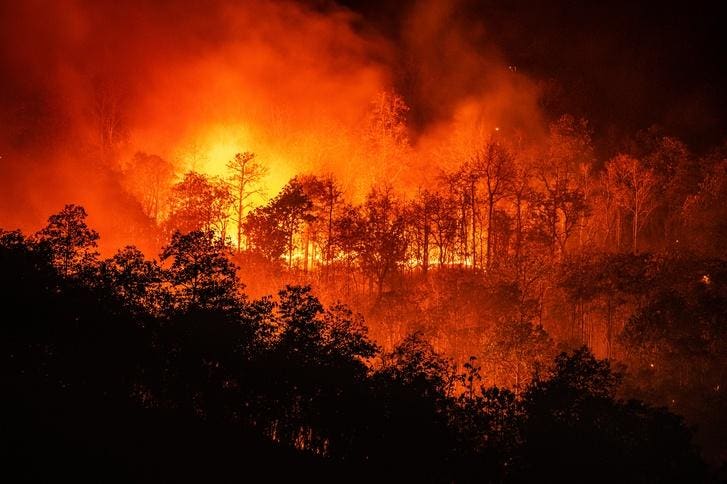O.P. Almaraz, CEO of Allied Disaster Defense. Wildfire Prevention Expert and 26-year Disaster Restoration Specialist.
As the CEO of Allied Disaster Defense, a leader in disaster risk management, I’ve gained invaluable insights into the importance of proactive disaster preparedness for businesses. Over the years, our team has guided countless organizations through crises, helping to mitigate damage and disruption. We’ve developed unique strategies that set us apart in this field, and in this article, I’m eager to share some of the lessons we’ve learned.
In recent years, the frequency and intensity of natural disasters have increased significantly due to the effects of climate change. This has created a critical need for disaster prevention and mitigation measures, particularly for business owners, as the risks of natural disasters can devastate businesses and lead to significant financial losses and even closure.
In its 2019 report, Swiss Re Institute noted that global economic losses from natural disasters amounted to $176 billion in 2018, much of which fell on the shoulders of businesses. It also projected that climate change would likely exacerbate the frequency and severity of these disasters in the future.
Proactive Vs. Reactive Disaster Management: A Defining Dichotomy
Reactive disaster management, which responds to a crisis after it has occurred, can be immensely costly for businesses. This approach often results in significant disruptions, financial loss and damage to the company’s reputation.
In contrast, a proactive approach to disaster prevention emphasizes foresight and preemptive planning. It minimizes risk by identifying potential threats before they manifest and formulating strategies to counteract them effectively.
One critical aspect of proactive disaster management is to implement emergency response plans. For example, our team is comprised of former code compliance inspectors and fire marshals. We help businesses prepare for disasters by identifying potential risks and developing comprehensive plans to prepare for fires, water intrusion or earthquakes. It’s important to identify what the biggest threat to your business is.
Disasters cause devastating impacts on businesses long after the disaster has occurred. Here are some ways businesses suffer.
Direct Damage To Infrastructure And Assets
Wildfires, water damage and earthquakes can cause significant destruction to physical infrastructure, such as buildings, machinery, equipment and inventory. Once these assets are damaged or destroyed, restoring operations can take substantial time and financial resources.
Business Interruption
Businesses often remain closed due to damage, safety checks, cleanup and restoration efforts. This loss of operational time translates into lost revenue and profit, and in some cases, can threaten the business’s survival, especially for smaller organizations with fewer resources.
Workforce Impact
Disasters also affect the local workforce. Employees may lose their homes or need to evacuate, causing labor shortages. Psychological impacts, such as trauma or stress, may also lead to lower productivity.
Reputational Damage
Businesses might suffer reputational damage depending on their response to the disaster. For instance, if a business is perceived to have failed in safeguarding its employees or contributing to community recovery efforts, it could face backlash from consumers and the public.
The Positive Results Of Disaster Preparedness
In October 2017, the Tubbs Fire, one of California’s deadliest and most destructive wildfires, swept through the region, destroying homes, businesses and vineyards. The Paradise Ridge Winery, founded in 1994, was one of the businesses affected by the disaster.
The fire destroyed many of the winery’s facilities, including its tasting rooms and main estate building. Despite the significant losses incurred by the fire, the owners of Paradise Ridge Winery remained determined to rebuild and reopen their business.
In 2019, just two years after the devastating fire, Paradise Ridge Winery reopened its doors to the public, offering tastings, tours and events in its newly rebuilt facilities. The winery’s reopening was a symbol of hope and resilience for the community and a testament to the strength and determination of small business owners in the face of disaster.
The subsequent reopening of Paradise Ridge Winery highlights the importance of disaster recovery and mitigation efforts for businesses.
By embedding disaster prevention planning into your strategic blueprint, you can curtail potential financial losses and fortify your operational resilience in the face of natural disasters. Such proactive investment is a safeguard against potential catastrophe and a testament to your commitment to long-term sustainability and your promise to stakeholders.
In its 2019 report, the Bank of England noted that companies failing to plan for the physical risks of climate change could face significant losses, with potential damages estimated to reach $20 trillion.
In the volatile world that we operate in, disaster preparedness will differentiate future-forward businesses from the rest, ensuring that you survive and thrive despite adversity.
Forbes Business Council is the foremost growth and networking organization for business owners and leaders. Do I qualify?
Read the full article here










